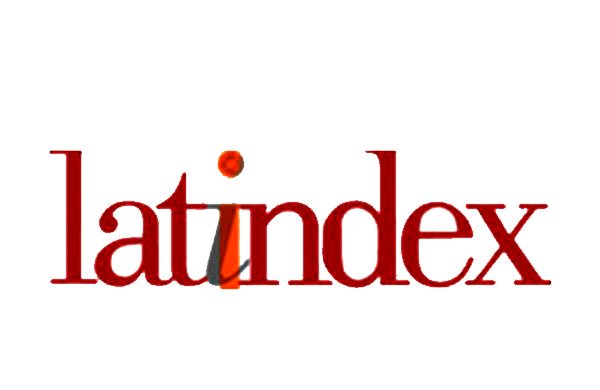Influence of lean and fat mass on the phase angle of patients with Duchenne muscular dystrophy
Influência da massa magra e gorda no ângulo de fase de pacientes com distrofia muscular de Duchenne
DOI:
https://doi.org/10.17765/2176-9206.2025v18e12870Keywords:
Duchenne muscular dystrophy, Body Composition, Bioelectrical Impedance, Dystrophyn, phase angleAbstract
Objective: To realize a narrative review of the literature to explore aspects related to the percentage of lean fat mass (FM) and fat-free mass (FFM) and their relationship with phase angle (PA) in patients with Duchenne muscular dystrophy (DMD). Methods: A literature review was carried out, through a search in health science databases, using the terms Duchenne Muscular Dystrophy; Bioelectrical Impedance, Body Composition. Results: 9 studies met the selection criteria and were included in this review. The data indicate that individuals with DMD have a higher percentage of FM, a lower percentage of FFM and lower PA values than healthy subjects, where the absence of dystrophin results in instability in the muscle membrane and a subsequent decrease in PA. Conclusion:The FFM, MG and AF variables are modified with the progression of DMD, and the relationship between them is not clear. It is suggested that future studies explore the prognostic and therapeutic potential of the use of PA in DMD, correlating it with measures of functional performance and muscle strength.Downloads
References
Annexstad EJ, Fagerheim T, Holm I, Rasmussen M. Molecular and Clinical Characteristics of a National Cohort of Paediatric Duchenne Muscular Dystrophy Patients in Norway. J Neuromuscul Dis 2019; 6: 349–59. DOI: https://doi.org/10.3233/JND-190402
Jaka O, Casas-Fraile L, López De Munain A, Sáenz A. Costamere proteins and their involvement in myopathic processes. Expert Rev Mol Med 2015; 17. DOI: https://doi.org/10.1017/erm.2015.9.
Waldrop MA, Flanigan KM. Update in Duchenne and Becker muscular dystrophy. Curr Opin Neurol 2019; 32: 722–7. DOI: https://doi.org/10.1097/WCO.0000000000000739.
Leon MADS, Roza DL Da, Davoli GBDQ, Baptista CRDJA De, Sobreira CFDR, Mattiello-Sverzut AC. Generation of percentile curves for strength and functional abilities for boys with Duchenne muscular dystrophy. Muscle and Nerve 2023; 68: 198–205. DOI: https://doi.org/10.1002/mus.27921.
Billich N, Adams J, Carroll K, et al. The Relationship between Obesity and Clinical Outcomes in Young People with Duchenne Muscular Dystrophy. Nutrients 2022; 14: 1–15. DOI: https://doi.org/10.3390/nu14163304
Souza MA de, Cezarani A, Lizzi EA da S, et al. The use of the gait profile score and gait variable score in individuals with Duchenne Muscular Dystrophy. J Biomech 2020; 98. DOI: https://doi.org/10.1016/j.jbiomech.2019.109485.
Mok E, Letellier G, Cuisset J-M, Denjean A, Gottrand F, Hankard R. Assessing change in body composition in children with Duchenne muscular dystrophy: anthropometry and bioelectrical impedance analysis versus dual-energy X-ray absorptiometry. Clin Nutr 2010; 29: 633–8. DOI: https://doi.org/10.1016/j.clnu.2010.03.011.
Vermeulen KM, Lopes MMGD, Grilo EC, et al. Bioelectrical impedance vector analysis and phase angle in boys with duchenne muscular dystrophy. Food Nutr Res 2019; 63: 1–9. DOI: https://doi.org/10.29219/fnr.v63.1615.
Martins PC, Alves Junior CAS, Silva AM, Silva DAS. Phase angle and body composition: A scoping review. Clin Nutr ESPEN 2023; 56: 237–50. DOI: https://doi.org/10.1016/j.clnesp.2023.05.015.
Gulin J, Ipavic E, Mastnak DM, Brecelj E, Edhemovic I, Kozjek NR. Phase angle as a prognostic indicator of surgical outcomes in patients with gastrointestinal cancer. Radiol Oncol 2023; 57: 524–9. DOI: https://doi.org/10.2478/raon-2023-0060.
Yoshimura Y, Wakabayashi H, Nagano F, et al. Phase angle is associated with sarcopenic obesity in post-stroke patients. Clin Nutr 2023; 42: 2051–7. DOI: https://doi.org/10.1016/j.clnu.2023.08.018.
Yokomachi J, Fukuda T, Mizushima Y, et al. Clinical usefulness of phase angle as an indicator of muscle wasting and malnutrition in inpatients with cardiovascular diseases. Asia Pac J Clin Nutr 2023; 32: 297–307. DOI: https://doi.org/10.6133/apjcn.202309_32(3).0001.
Kang SH, Do JY. Phase Angle as a Risk Factor for Mortality in Patients Undergoing Peritoneal Dialysis. Nutrients 2023; 15. DOI: https://doi.org/10.3390/nu15234991.
Rosas-Carrasco O, Núñez-Fritsche G, López-Teros MT, et al. Low muscle strength and low phase angle predicts greater risk to mortality than severity scales (APACHE, SOFA, and CURB-65) in adults hospitalized for SARS-CoV-2 pneumonia. Front Nutr 2022; 9: 4–11. DOI: https://doi.org/10.3389/fnut.2022.965356.
Desport JC, Marin B, Funalot B, Preux PM, Couratier P. Phase angle is a prognostic factor for survival in amyotrophic lateral sclerosis. Amyotroph Lateral Scler 2008; 9: 273–8. DOI: https://doi.org/10.1080/17482960801925039.
Radić M, Kolak E, Đogaš H, et al. Body composition parameters in systemic sclerosis—a systematic review and meta-analysis. Rheumatology 2024; 63: 16–25. DOI: https://doi.org/10.1093/rheumatology/kead418.
Pineda-Juárez JA, Lozada-Mellado M, Ogata-Medel M, et al. Body composition evaluated by body mass index and bioelectrical impedance vector analysis in women with rheumatoid arthritis. Nutrition 2018; 53: 49–53. DOI: https://doi.org/10.1016/j.nut.2018.01.004.
Norman K, Stobäus N, Pirlich M, Bosy-Westphal A. Bioelectrical phase angle and impedance vector analysis - Clinical relevance and applicability of impedance parameters. Clin Nutr 2012; 31: 854–61. DOI: https://doi.org/10.1016/j.clnu.2012.05.008.
Mok E, Béghin L, Gachon P, Daubrosse C, Fontan J, Cuisset J. Estimating body composition in children with Duchenne muscular dystrophy: comparison of bioelectrical impedance analysis and. Am J Clin Nutr 2006; 83: 65–9.DOI: https://doi.org/10.1093/ajcn/83.1.65.
Barja S, Pérez R. Clinical assessment underestimates fat mass and overestimates resting energy expenditure in children with neuromuscular diseases. Clin Nutr ESPEN 2016; 15: 11–5.DOI: https://doi.org/10.1016/j.clnesp.2016.03.079.
Grilo EC, Cunha TA, Costa ÁDS, et al. Validity of bioelectrical impedance to estimate fat-free mass in boys with Duchenne muscular dystrophy. PLoS One 2020; 15: 1–12.DOI: https://doi.org/10.1371/journal.pone.0241722.
Jacques MF, Onambele-Pearson GL, Reeves ND, Stebbings GK, Smith J, Morse CI. Relationships between muscle size, strength, and physical activity in adults with muscular dystrophy. J Cachexia Sarcopenia Muscle 2018; 9: 1042–52.DOI: https://doi.org/10.1002/jcsm.12347.
Saure C, Caminiti C, Weglinski J, de Castro Perez F, Monges S. Energy expenditure, body composition, and prevalence of metabolic disorders in patients with Duchenne muscular dystrophy. Diabetes Metab Syndr Clin Res Rev 2018; 12: 81–5. DOI: https://doi.org/10.1016/j.dsx.2017.08.006.
Maciel Pizzato T, Jesus Alves de Baptista CR de, Martinez EZ, Sobreira CF da R, Mattiello-Sverzut AC. Prediction of Loss of Gait in Duchenne Muscular Dystrophy Using the Ten Meter Walking Test Rates. J Genet Syndr Gene Ther 2016; 7: 1–6.DOI: https://doi.org/10.4172/2157-7412.1000306.
Davis J, Samuels E, Mullins L. Nutrition Considerations in Duchenne Muscular Dystrophy. Nutr Clin Pract 2015; 30: 511–21.DOI: https://doi.org/10.1177/0884533615586202.
Pane M, Vasta I, Messina S, et al. Feeding problems and weight gain in Duchenne muscular dystrophy. Eur J Paediatr Neurol 2006; 10: 231–6.DOI: https://doi.org/10.1016/j.ejpn.2006.08.008.
Mattiello R, Mundstock E, Ziegelmann PK. Brazilian Reference Percentiles for Bioimpedance Phase Angle of Healthy Individuals. 2022; 9: 1–7.DOI: https://doi.org/10.3389/fnut.2022.912840.
Souza MA, Ferreira ME, de Baptista CRJA, Mattiello-Sverzut AC. Gasto energético na marcha de crianças com distrofia muscular de Duchenne: estudo de caso. Fisioter Pesq. 2014;21(2):193-198. DOI: https://doi.org/10.1590/1809-2950/63621022014.
Downloads
Published
How to Cite
Issue
Section
License
Copyright (c) 2025 Saúde e Pesquisa

This work is licensed under a Creative Commons Attribution 4.0 International License.
A submissão de originais para a revista Saúde e Pesquisa implica na transferência da Carta Concessão de Direitos Autorais, pelos autores, dos direitos de publicação digital para a revista após serem informados do aceite de publicação.A Secretaria Editorial irá fornecer da um modelo de Carta de Concessão de Direitos Autorais, indicando o cumprimento integral de princípios éticos e legislação específica. Os direitos autorais dos artigos publicados nesta revista são de direito do autor, com direitos da revista sobre a primeira publicação. Os autores somente poderão utilizar os mesmos resultados em outras publicações, indicando claramente a revista Saúde e Pesquisa como o meio da publicação original. Em virtude de tratar-se de um periódico de acesso aberto, é permitido o uso gratuito dos artigos, principalmente em aplicações educacionais e científicas, desde que citada a fonte. A Saúde e Pesquisa adota a licença Creative Commons Attribution 4.0 International.
A revista se reserva o direito de efetuar, nos originais, alterações de ordem normativa, ortográfica e gramatical, com vistas a manter o padrão culto da língua e a credibilidade do veículo. Respeitará, no entanto, o estilo de escrever dos autores. Alterações, correções ou sugestões de ordem conceitual serão encaminhadas aos autores, quando necessário. Nesses casos, os artigos, depois de adequados, deverão ser submetidos a nova apreciação. As opiniões emitidas pelos autores dos artigos são de sua exclusiva responsabilidade.

















